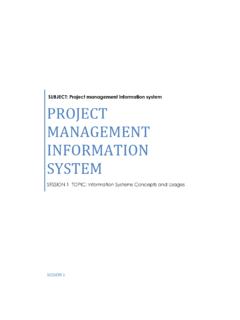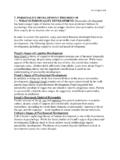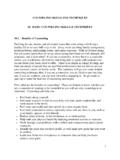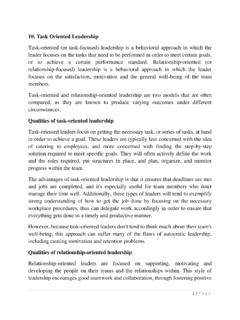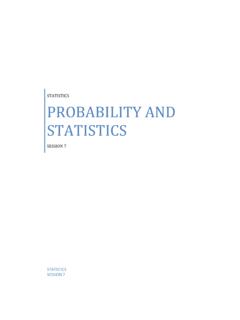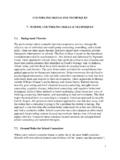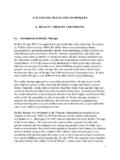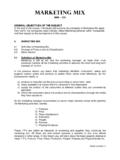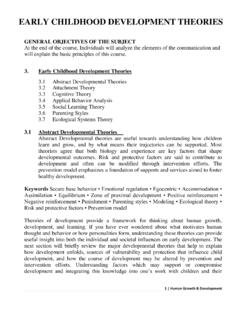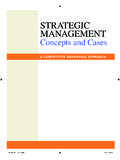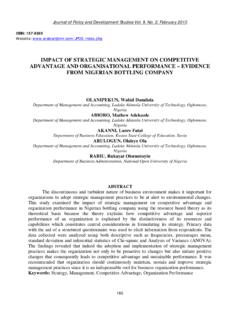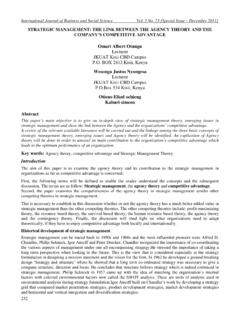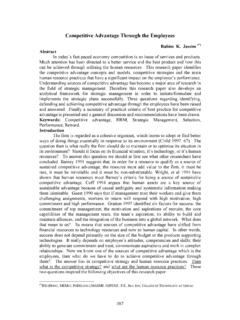Transcription of Strategic Management 1. Strategic Management …
1 S e s s i o n 1 S t r a t e g i c M a n a g e m e n t | 1 Strategic Management Session 1 1. Strategic Management Strategic Management Concepts Strategic Management consists of the analysis, decisions, and actions an organization undertakes in order to create and sustain competitive advantages. This definition captures two main elements that goes to the heart of the field of Strategic Management . First, the Strategic Management of an organization entails three ongoing processes: analysis, decisions, and actions. That is, Strategic Management is concerned with the analysis of Strategic goals (vision, mission, and Strategic objectives) along with the analysis of the internal and external environment of the organization. Next, leaders must make Strategic decisions. These decisions, broadly speaking, address two basic questions: What industries should we compete in?
2 How should we compete in those industries? These questions also often involve an organization s domestic as well as its international operations. And last are the actions that must be taken. Decisions are of little use, of course, unless they are acted on. Firms must take the necessary actions to implement their strategies. This requires leaders to allocate the necessary resources and to design the organization to bring the intended strategies to reality. As we will see in the next section, this is an ongoing, evolving process that requires a great deal of interaction among these three processes. Second, the essence of Strategic Management is the study of why some firms outperform others. Thus, managers need to determine how a firm is to compete so that it can obtain advantages that are sustainable over a lengthy period of time. That means focusing on two fundamental questions: How should we compete in order to create competitive advantages in the marketplace?
3 For example, managers need to determine if the firm should position itself as the S e s s i o n 1 S t r a t e g i c M a n a g e m e n t | 2 low-cost producer, or develop products and services that are unique which will enable the firm to charge premium prices-or some combination of both. Managers must also ask how to make such advantages sustainable, instead of highly temporary, in the marketplace. That is: How can we create competitive advantages in the marketplace that are not only unique and valuable but also difficult for competitors to copy or substitute? Ideas that work are almost always copied by rivals immediately. In the 1980s, American Airlines tried to establish a competitive advantage by introducing the frequent flyer program. Within weeks, all the airlines did the same thing. Overnight, instead of competitive advantage, frequent flyer programs became a necessary tool for competitive parity, not competitive advantage.
4 The challenge, therefore, is to create competitive advantage that is sustainable. Michael Porter argues that sustainable competitive advantage cannot be achieved through operational effectiveness alone. Most of the popular Management innovations of the last two decades-total quality, just-in-time, benchmarking, business process reengineering, outsourcing all are about operational effectiveness. Operational effectiveness means performing similar activities better than rivals. Each of these is important, but none lead to sustainable competitive advantage, for the simple reason that everyone is doing them. Strategy is all about being different from everyone else. Sustainable competitive advantage is possible only through performing different activities from rivals or performing similar activities in different ways. Companies such as Wal-Mart, Southwest Airlines, and IKEA have developed unique, internally consistent, and difficult to imitate activity systems that have provided them with sustained competitive advantage.
5 A company with a good strategy must make clear choices about what it wants to accomplish. Trying to do everything that your rivals do eventually leads to mutually destructive price competition, not long-term advantage. Dess, Gregory G., Lumpkin and Marilyn L. Taylor. Strategic Management . 2 ed. New S e s s i o n 1 S t r a t e g i c M a n a g e m e n t | 3 York: McGraw-Hill Irwin, 2005. Definition of Strategic planning Every organization or major part of a complex organization occasionally has to make some momentous decisions- the sort of decisions that affect the entire destiny of the organization for years into the future. These decisions are designed to address the really biggest and most important issues facing an organization issues so significant we might call them ' Strategic elephants'. So our definition of Strategic planning must have something about big decisions.
6 Such decisions are not simply about small adjustments to activity levels, but are the kind of decisions that may lead to a substantially different organizational structure, or major changes in the relationships among key stakeholders, competitive position, or Strategic partners of the organization. Sometimes the outside world forces such decisions on the organization. Such forces may include major shifts in the market, big changes in government policy, and radical moves by competing organizations. Sometimes, it is something inside the organization that demands a major reappraisal. Technological change driving new methods of carrying out its work, or weakening of its financial structure, or a change in the senior Management of the organization requiring a large re-organization are examples of such internal forces. Organizations have always faced such pressures to make huge decisions.
7 In recent years, the pressure has risen to the point where a systematic yet flexible process of dealing with such decisions is called for. Such a process is variously and sometimes confusingly described as: corporate planning, Strategic planning, business planning, and variations such as corporate Strategic planning, or Strategic business planning. Other labels make the subject more industry specific such as military Strategic planning, hospital S e s s i o n 1 S t r a t e g i c M a n a g e m e n t | 4 Strategic planning, and in some jurisdictions what others know as urban and regional planning is sometimes called Strategic planning. As its name implies will focus primarily on Strategic planning . By this we have in mind any plan which looks forward several years and which is concerned with massive factors only. The focus of the decisions in the plan are the organization as a whole in its environment as a whole.
8 Main Authors George Steiner Strategic planning is not all of planning process, but it can be a major component. In his 1979 book, George Steiner developed the conceptual model of the structure and process of systematic corporate planning. The model consists of the following elements: A plan to plan. This plan is contained in a detailed manual. It sets forth a statement of top Management commitment to planning, a set of term definitions to head off communication problems, a statement of required information and documentation, a detailed time schedule, and so on. The four components of the situation audit. At the top of the stacked boxes are "expectations of major outside interests" and "expectations of major inside interests". They are fundamental premises in any Strategic planning system. The last two boxes, "the data bass" and "evaluation of environment" include information that is essential in helping managers doing the planning to identify alternative courses of action and to evaluate them properly.
9 A corporate plan: master strategies and programs strategies. It consists mission, purpose, objectives, and policies. Medium-range plans. These focus primarily on major functions or programs - marketing, production, employee levels, research and development, facilities and the like. Short-range plans. Short-range plans can vary a wide spectrum. Their grade gradually into implementation. S e s s i o n 1 S t r a t e g i c M a n a g e m e n t | 5 Review and evaluation. "Implementation" and "review and evaluation" include everything I considered to these points. In addition, Steiner divides the planning process into two parts: Strategic and tactical; certain types of planning in the Strategic are and others in the tactical. The major contributions of Steiner's model are: "the plan to plan" and the four boxes dealing with substantive information needed in the development and implementation of plans Igor Ansoff This profile is the first in a series on the world's most influential Management thinkers, past and present.
10 The profiles are adapted from The Economist Guide to Management Ideas and Gurus , by Tim Hindle. A new profile will be published online every Friday in 's Management section Jul 18th 2008 Igor Ansoff (1918-2002) was the father of modern Strategic thinking. When Gary Hamel referred to the origins of corporate strategy he paid Ansoff an indirect compliment: Strategy didn't start with Igor Ansoff, neither did it start with Machiavelli, he wrote. It probably did not even start with Sun Tzu. Strategy is as old as human conflict. In other words, Ansoff came of a great line passing through Machiavelli and Sun Tzu. Born in Vladivostok of a Russian mother and an American diplomat father, Ansoff spent the first 18 years of his life in Russia before moving to New York, where he studied mechanical engineering and physics. In 1950 he joined the Rand Corporation, an influential think-tank of the time, where he worked on Strategic problem-solving for NATO, developing theories that he subsequently came to apply to business.
